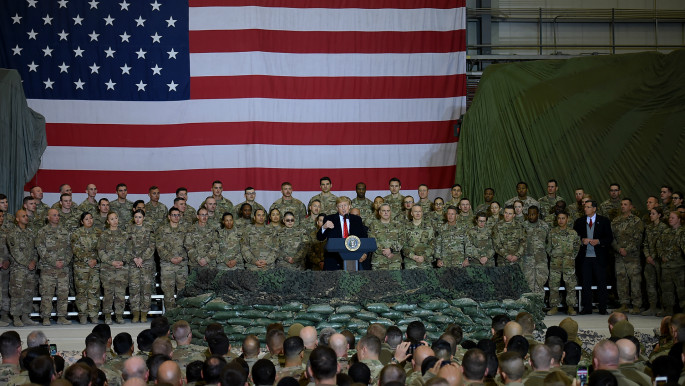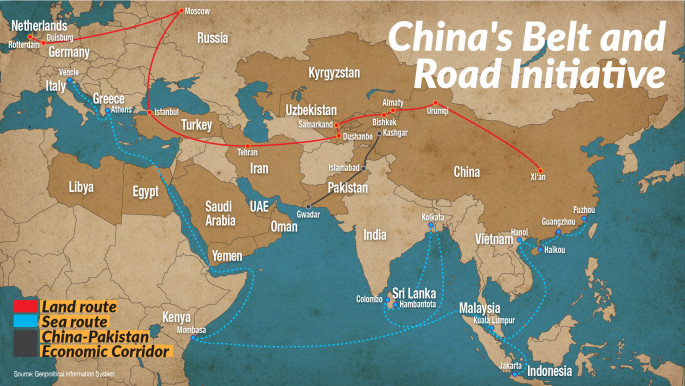Is China set to play a greater role in Afghanistan?
China sees strategically located Afghanistan as a bridge to help expand connectivity between East, South and Central Asian regions under the BRI.
For China, Afghanistan presents both the opportunity and the challenge. Perhaps the most formidable challenge for China is how to convert its fear of stirring separatist sentiments in its volatile Xinjiang province bordering Afghanistan into a strategic opportunity by having an increased presence in the war-battered country?
China's interests in Afghanistan actually coincide with its wider plan for the development of western China, its regional trade links, energy pipelines and expansion of economic influence in the region.
China is likely to deepen its strategic partnership with Pakistan and Afghanistan to form a 'Pamir group' in order to establish a new Silk Road linking the Caucasus to western China.
Historically, the Pamir Mountains were considered a strategic trade route between Kashgar in China and Kokand in Uzbekistan on Northern Silk Road.
Read also: Welcome to Kashgar! Where you can sip tea and watch Uighurs be persecuted
After withdrawal of US troops, there are bright prospects for China to emerge as biggest player with the help of its close ally Pakistan in war-ravaged country. The year 2020 could be the year when China is likely to test its fortunes to play a greater role in Afghanistan.
 |
The year 2020 could be the year when China is likely to test its fortunes to play a greater role in Afghanistan |  |
US-Afghan strategy creates space for China
In a surprise and unannounced visit to Afghanistan in November, US President Donald Trump for the first time arrived at Bagram Air Base and announced resuming peace talks with the Taliban.
Peace talks between the US and the Taliban restarted in December in Qatar, three months after Trump abruptly halted diplomatic efforts that could help end the 18-year old war in Afghanistan.
At present, both the US and the Taliban hope to finalise a peace agreement in one or two weeks.
Trump administration's Afghan policy has been somewhat ambiguous and US officials have been vacillating between 'peace and war' options to end the longest war in US history.
 |
|
| Will the US-Taliban negotiations settle Afghanistan's political problem? |
The suspension of the peace process thus created space for China to deepen its involvement in Afghanistan.
Beijing made contact with the Afghan government and the Taliban for political settlement of conflict after Trump abruptly cancelled peace talks with the Taliban in September.
China then hosted a Taliban delegation in September as part of its reconciliation efforts.
China's growing stakes in Afghanistan
China has been on the sidelines of the 'Afghanistan conflict' for the last three decades. It actually took a U-turn in its Afghan policy in 2007 when it won the contract for exploiting the giant $3 billion Aynak copper mine, one of the world's largest, in the country's Logar province.
After making entry as an investor and developer, China then gradually increased its economic and political profile in Afghanistan over the past twelve years. It also invested in oil and gas exploration projects and railway infrastructure development in the war-torn country.
The US is currently seeking guarantees from the Taliban that Afghanistan would not be used as a launchpad for global terror attacks. If the Taliban can give peace assurances to the US, then why not to China, which is ambitious to extend its BRI through Afghanistan?
 |
|
Pakistan is China's trump card to enhance its political profile in Afghanistan. As a close ally of Pakistan, China has enormous leverage over the South Asian country, which has leverage over Afghan Taliban.
If Pakistan could become a key facilitator of peace talks between the US and Taliban, then it could potentially facilitate China to deepen its involvement in Afghanistan.
Certainly, the US wants to conclude the endgame of the Afghan war on its own terms, and China wants to play a greater role in Afghanistan after America's military withdrawal.
The East Asian country is currently engaged in reconciliation efforts to end the war in Afghanistan and announced a meeting of Afghan stakeholders in Beijing last year.
It would be the first time that China hosts delegations from both the Kabul government and the Taliban to exchange views on the peace process. The date of the meeting is yet to be announced by China, but the Taliban has already ruled out the possibility of intra-Afghan talks until the insurgent group signs a deal with the US on troops withdrawal.
 |
The US wants to conclude the endgame of the Afghan war on its own terms, and China wants to play a greater role in Afghanistan after America's military withdrawal |  |
BRI extension to Afghanistan
Afghanistan is among 86 countries which have signed a Memorandum of Understanding (MoU) with China, but not yet jointed the BRI initiative.
 |
|
| Read also: What's really behind Saudi Arabia's inclusion of Chinese as a third language? |
Afghanistan could regain its historical position as an "Asian transit and trade roundabout" connecting South Asia to Central Asia, and East Asia to West Asia if it joins the BRI.
China has been offering Afghanistan to join BRI's flagship project – the $62 billion China-Pakistan Economic Corridor (CPEC). With increased stakes and a strong role in the war-torn country, Beijing would be in a good position to push or convince Kabul to join the BRI.
In a way, Afghanistan has joined the BRI flagship project. In the trilateral foreign ministers' meeting hosted by Islamabad last September, China, Pakistan and Afghanistan observed that the Peshawar-Kabul motorway may provide the foundation for Afghanistan's formal joining of the CPEC, as Pakistan's northwestern city, Peshawar, is already linked with the route.
Once Kabul and Peshawar are linked via the road, it would automatically connect Kabul to CPEC, the part of BRI.
The three sides have decided that the motorway would be named 'China-Afghanistan-Pakistan Plus Cooperation' (CAPPC).
China's security concerns, however, could aggravate as the US draws down its forces in Afghanistan. China is detaining its own ethnic Uighur Muslim population and placing them in concentration camps, there are concerns that post-US withdrawal Afghanistan provides a fertile ground for the growth of Uighur militant groups, linking them to international Islamic militancy and consequently posing an even bigger threat to China's internal security.
Certainly, China would have drawn some red lines with respect to its involvement in Afghanistan. But how can one draw the red line within a red zone?
Syed Fazl-e-Haider is a contributing analyst at South Asia desk of Wikistrat. He is a freelance columnist and author of many books including the 'Economic Development of Balochistan





 Follow the Middle East's top stories in English at The New Arab on Google News
Follow the Middle East's top stories in English at The New Arab on Google News


